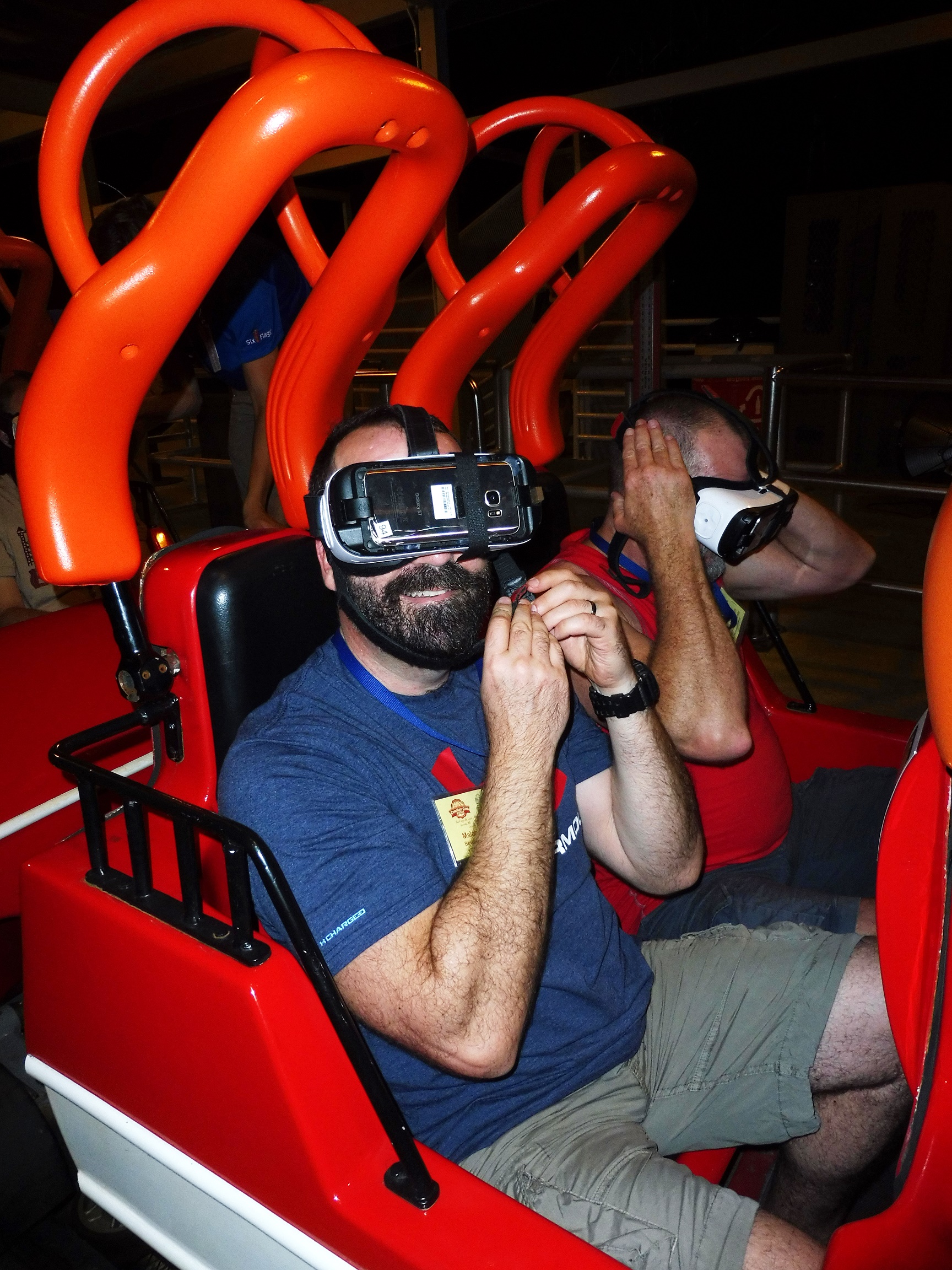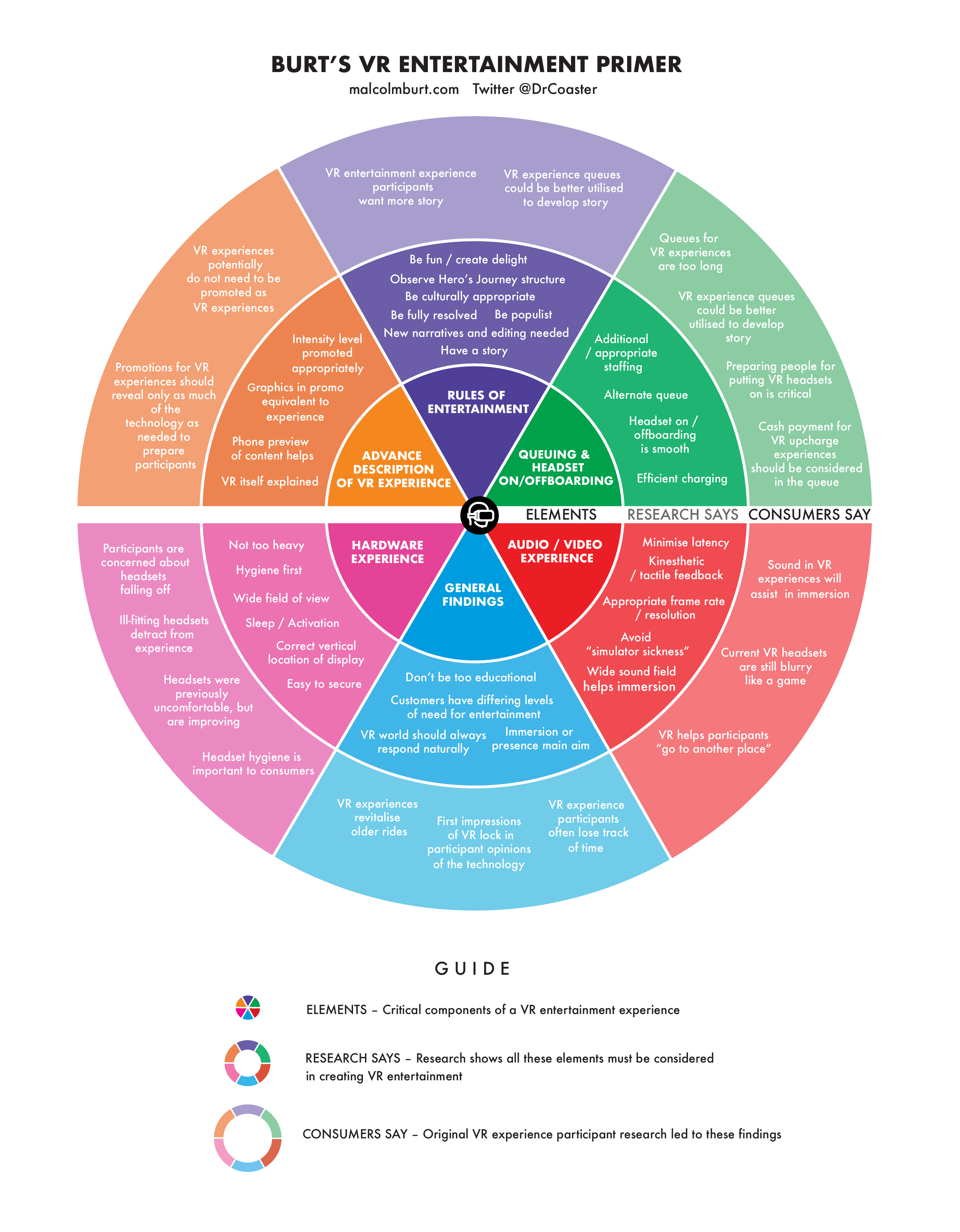If creators don’t get virtual reality right for thrill rides the concept of VR as entertainment could be set back years; mirroring its habit of riding waves of popularity before falling into obscurity over the past two decades.
- VR rides should be fun and not too educational
- Consumers want a story along with the VR technology
- Hygiene a concern for many when sharing headsets
- No-one wants to look foolish wearing VR goggles
- Over-hyped VR experiences create disappointment and set the industry back
QUT researcher Malcolm Burt, known as @DrCoaster, is close to completing his PhD on what consumers want from VR entertainment experiences, including theme park rides and simulators. His findings so far are captured in ‘Burt’s VR Entertainment Primer’ (see below) and highlight that technology alone is not enough of a selling point.

"Despite most vendors promoting the technology as the drawcard, consumers have consistently and clearly stated they want more story," said Mr Burt who completed his Research Masters on why rollercoasters exist and created the documentary, Signature Attraction.
"I find this is quite charming. It means that despite flashy technology, we haven’t changed that much from the cavemen and women we once were, sitting around the fire telling each other stories. However, it is also important to avoid being too ‘educational’ in that story-telling. It needs to be fun.
"Most people still don’t even know what VR is or what it means so sometimes it’s better to promote the experience by itself saying ‘Come fly over a volcano!’ or ‘Journey to the centre of the earth’ or ‘Take a trip to Mars’ rather than ‘Come try our new VR ride!’
"During my Masters research I discovered that the main reason we love rollercoasters is because we are bored. People also love the notion of feeling scared without being in real danger."
Mr Burt said his current research into VR had found consumers were concerned about the hygiene of sharing headsets with others, as well as having their hair or make-up messed up.
"Well-produced VR experiences make consumers lose track of time and place, yet many also feel self-conscious – after all, to people watching, you have a brick strapped to your face and appear to scream and wave your hands around for no apparent reason," he said.
"Another potential obstacle for the future of VR in this form is that the experiences are often over-hyped, as is fairly typical of most theme park experiences. This can lead to disappointment and cynicism among patrons.

Caption: Burt's VR Entertainment Primer
"The technology is evolving very rapidly and some of the attractions in development are stunning, but first impressions of VR rides - most of which have been rushed to market to capitalise on current interest - can have lasting negative effects on consumers.
"There is always the danger that VR, rather than becoming a regular and expected part of entertainment and amusement, will return to the fringes where it has lurked for more than 20 years."
In the course of his research, Mr Burt has spent the past three years analysing virtual reality rides (where users go on real drop rides with headsets on so they are seeing an even scarier experience in their headsets), including virtual reality drop rides, virtual reality rollercoasters, simulators, and ‘room scale’ attractions.
In 2017, he was invited by German waterslide company Wiegand-Maelzer to consult on its world-first virtual reality waterslide concept, now installed at the Galaxy Water Park in Erding, Bavaria. Riders wear headsets and go down a real waterslide which ‘virtually’ transforms into a volcano.
"VR can trick the brain into believing it is danger, with every twist, turn and launch magnified to create an incredible adrenalin rush," said Burt who has also developed a virtual reality app with a Swedish physicist called the Virtual Theme Park with Lund University in Sweden to teach physics to students by putting them on virtual rollercoasters and thrill rides with overlays of g-forces on top.






